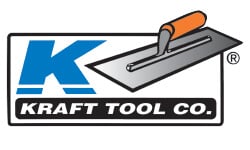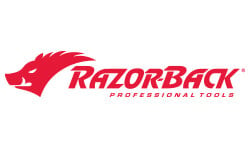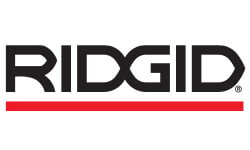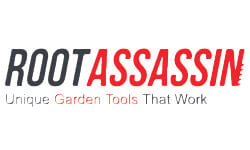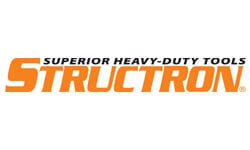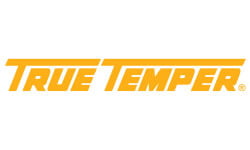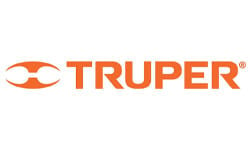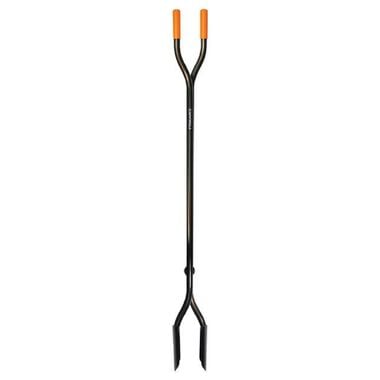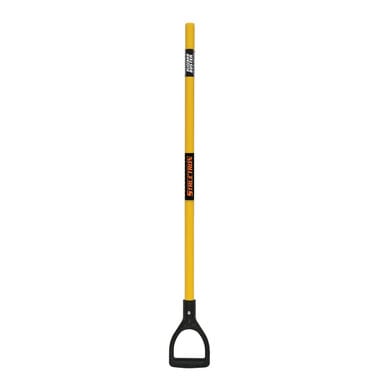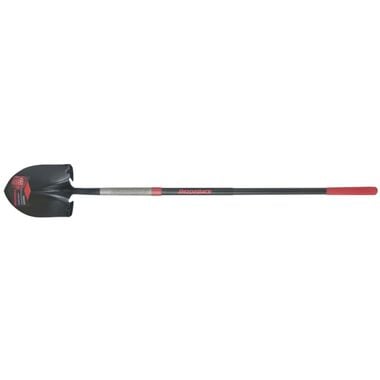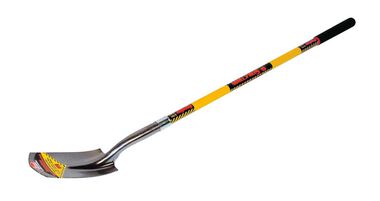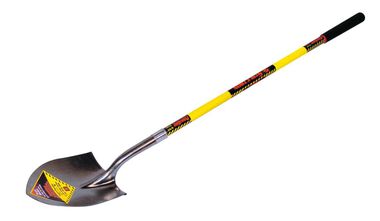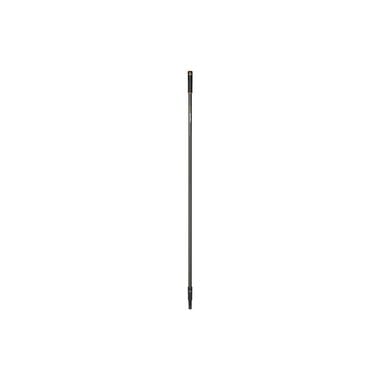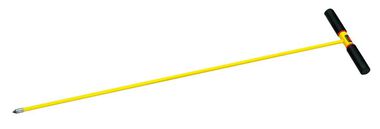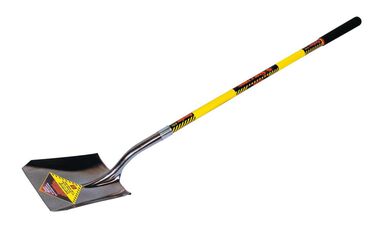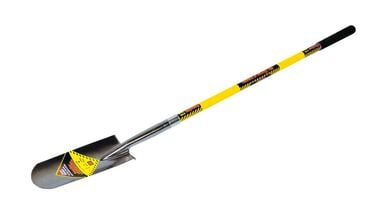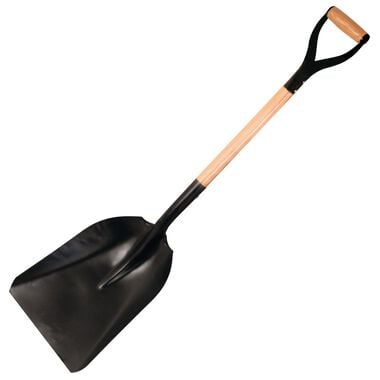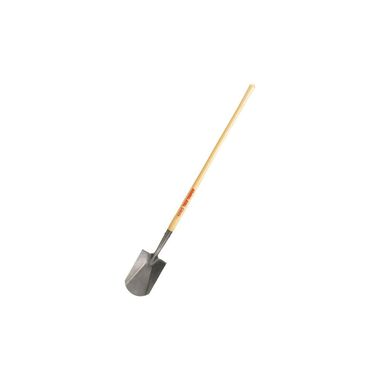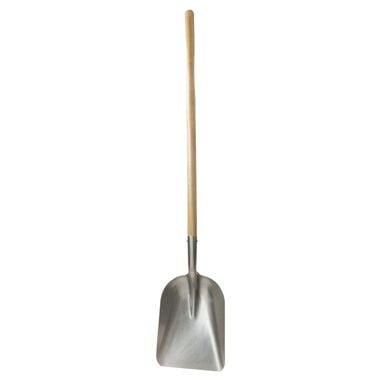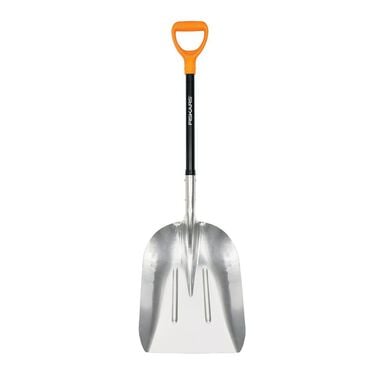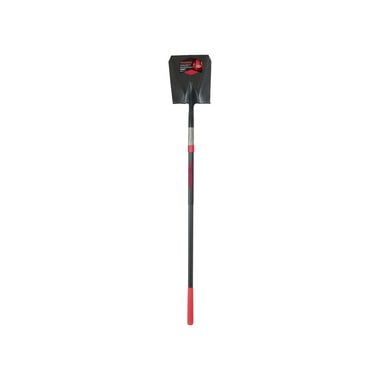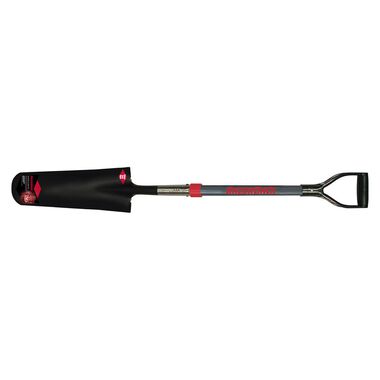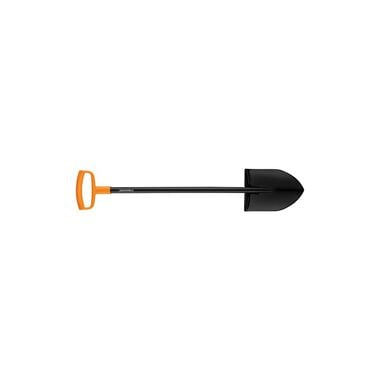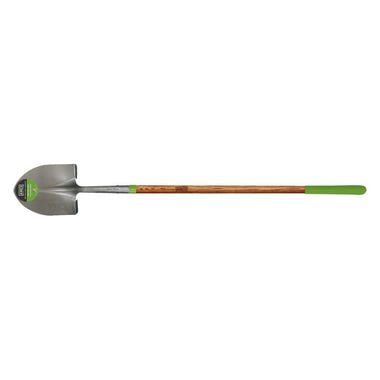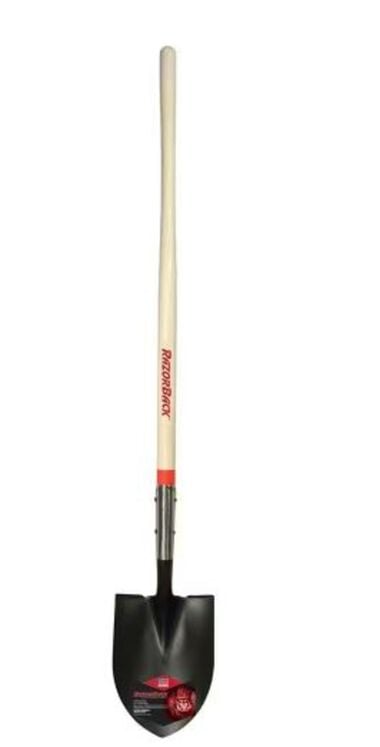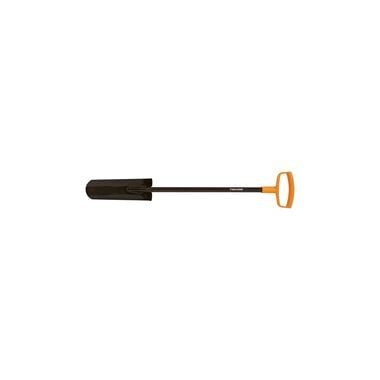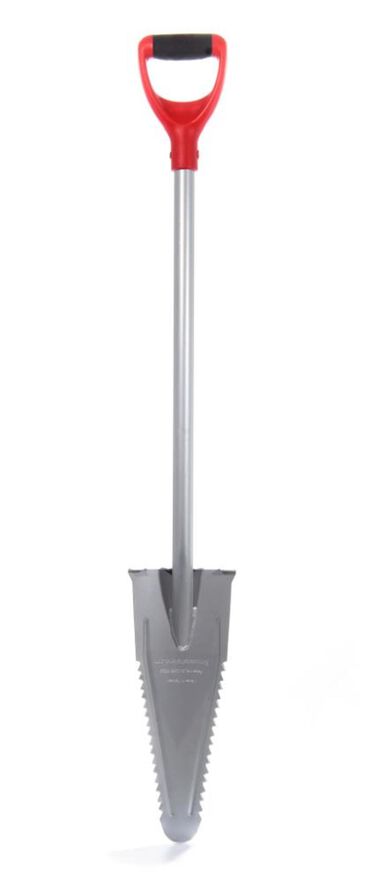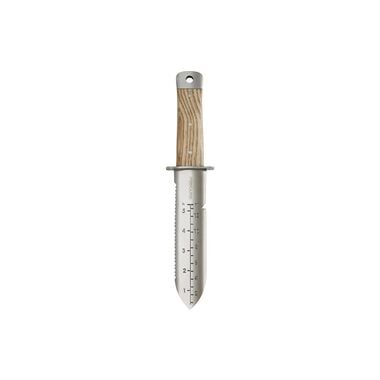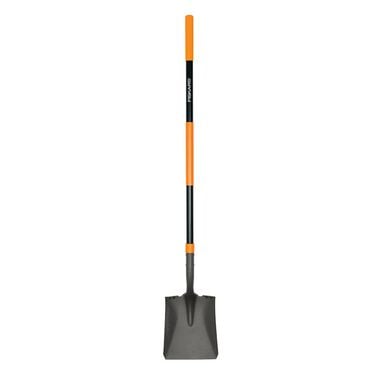Digging is a cutting process in which a digging tool is used to cut through the substrate and move it to another location. Shovels, post hole diggers, and soil probes are a few different digging tools. The most basic of these tools is the shovel. Modern shovels are typically made of metal at the end of a wooden handle. If the user is digging in soil with plant roots, the digging process is aided by the metal end of the shovel being sharpened. Post hole diggers are for the specific digging job of creating holes to put posts in. They consist of two articulated shovel-like blades that form an incomplete hollow cylinder about a foot long and only a few inches wide. This tool is operated in a scissor fashion using two long handles. The result is a narrow, semi-deep hole for the post to go into. Soil probes are used to collect shallow samples of soil for testing. They consist of a T-shaped probe that is pushed into the ground. The probe cuts a core sample smaller than the diameter of the probe body.
Shovels
A shovel is a tool for lifting and moving soil, sand, gravel, snow, or other debris and sediment.
Grips and Handles
Not all shovels come with grips, but a non-slip grip is a good option for safety purposes. Where the grip covers and you place your hand is the handle. Shovel handles come in several shapes depending on the work the shovel is intended for. D-grip handles are the most common and are usually a separate piece attached to the shovel’s shaft with glue or screws. Straight handles provide more leverage because they allow you to spread your arms out to gain control. They are especially beneficial for tall people because of the longer shaft. A crutch handle, also known as a T-grip, is usually longer than a D-grip handle, making it better for larger hands.
Shafts, Collars, Steps, Blades, and Tips
The shaft of the shovel is the pole that connects the handle to the rest of the shovel, and they come in various lengths. Not all shovel shafts are straight; some are curved, which makes it easier to complete specific tasks. Where the blade attaches to the shaft is called the collar. The step is on the top of the blade and is where you can place your foot to add more force. Not all shovels have this component, but most diggers do. The blade comes in a range of shapes and determines the category of the shovel. The tip is the point the blade makes, and this shape will depend on the job the shovel is intended for.
Digging Shovels
The four main categories of shovels are trench, digging, scoop, and power. Digging shovels come with several blade shapes. Most commonly, they have a square, pointed, or round blade. Square diggers have a flat end and are great for edging, trenching, and moving small shrubs or bushes. The flat edge is perfect for digging in hard, dry soil. Pointed diggers work well in loosely packed soil with dense root systems or rocks. They also scoop more efficiently than square diggers. Round diggers have curved blades with a curved point and are ideal for transplanting in loose soil since they don’t easily penetrate root systems or cause damage to the plants.
Trench, Scoop, and Power Shovels
Trenching shovels have a unique shape that is easily distinguishable from others: long and narrow with a pointed end. The blade is also concave. The blade is at an angle to the shaft, which puts it at an angle underground. This unique angle is ideal for scooping and moving dirt. Scoop shovels are usually referred to as snow shovels. They have a curved blade with a flat edge and are ideal for scooping mulch, gravel, stones, soil, and snow from one location to another. Lastly, power shovels somewhat resemble a weed wacker but are used for smaller snow removal jobs and digging into hard-packed ground.
Post Hole Diggers
Post hole diggers are primarily used for digging holes to install posts. They are ideal for this job because they require much less time and physical effort than using a spade or shovel. The main types of post hole diggers are traditional, scissor-action, universal, double-pivot, and offset.
Traditional and Scissor-Action
Traditional post hole diggers have the most straightforward design and consist of two rounded steel blades facing each other and connected to a pivot point. The blades are fastened to the handles. With this type of post hole digger, you pierce the ground while the handles are held together and then pull the handles apart to create a hole. Scissor-action, also known as split-handled, diggers have handles that cross over. The blades of this type of post hole digger differ from other types in that the blades have been welded to steel tubes. The handles are inserted into the tubes and bolted into place to increase the digger's strength. This design is ideal for working in rocky soil because of its durability.
Universal, Double-Pivot, and Offset
Universal post hole diggers, also known as Boston diggers, have a very different appearance than traditional scissor-action diggers. They have two handles of varying sizes and shapes. One handle is long and straight, while the other is shorter and lever-operated. One blade pierces the ground and dislodges the dirt before the lever-operated handle hinges down the second blade to collect and remove loose soil. Double-pivot post hole diggers have two pivot points instead of one. The second pivot point means that it works in the opposite way traditional post hole diggers work. Once the blades are in the ground, the handles are pushed together instead of apart. The additional pivot point's placement between the handles keeps them from opening too wide when opening the blades. This motion allows the digger to dig deeper, narrower holes than traditional diggers. Offset post hole diggers have straight handles that are very close together. The handles counteract at the top by bending out in opposite directions. This type of digger allows the user to use less force when closing the blades. Because of this feature, this tool can often dig deeper and narrower holes.








